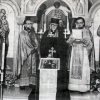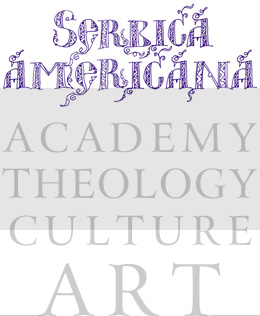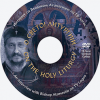Milan Kovačević was born to Sreten and Kristine Kovačević on 6 September, 1914, in the village Vrnčani near Gornji Milanovac in the Kingdom of Serbia. Milan completed primary school in his village, and high school in Gornji Milanovac. After completing the course at the Teachers High School, he served as a teacher in the village Ljutovnica near Gornji Milanovac.
In 1941, during World War II, because he was at that time an army reserve officer, he was taken by the Nazis to a camp in Germany, where he remained until 1945. After the liberation, Milan went to England, where he temporarily attended a seminary in Dorchester.
In 1950, he emigrated to the USA, and he enrolled in the Saint Vladimir’s Orthodox Theological Seminary in New York, and also in Columbia University.
In October, 1953, Milan entered the Serbian Orthodox Monastery of Saint Sava in Libertyville, Illinois. On 30 December, 1953, he was tonsured to be a monk by Archimandrite Firmilian (Ocokoljić), and he was given the name Irinej. On 31 December, 1953, the Monk Irinej was ordained to the Holy Diaconate in the monastery by Bishop Dionisije, while on April, 1954, the Hierodeacon Irinej was ordained to the priesthood in the monastery by Bishop Dionisije. On 31 August, 1956, the Hieromonk Irinej was elevated to the dignity of igumen (abbot).
In 1961, upon the recommendation of Bishop Dionisije, the Holy Synod of the Serbian Orthodox Church elevated Igumen Irinej to the dignity of archimandrite.
In 1963, the schism of Bishop Dionisije began. Bishop Dionisije did not accept the decision of the Holy Synod about the creation of 3 new dioceses, namely, “Midwestern America”, “Eastern America” and “Canada and Western America”. This matter also involved political concerns. In that year, Bishop Dionisije summoned the 10th National-Church assembly, which met in Libertyville from November 10-14, 1963. It was decided not to receive any decisions, orders, and instructions of the Holy Assembly of Bishops (“Sabor”) and of the Holy Synod in Belgrade in Yugoslavia, as long as the Serbian government remained a communist regime. The assembly rejected all decisions about the suspension of Bishop Dionisije, and about the division of the US-Canadian eparchy into 3 new ones. It was also decided to declare that the American-Canadian Diocese was now free and independent.
At the same Tenth National-Church Assembly, Archimandrite Irinej was elected to become a bishop. On 7 December, 1963, archimandrite Irinej was ordained to the episcopate by Bishop Dionisije along with two Ukrainian Orthodox bishops, Bishop Genadije and Bishop Gregory. On the Feast of the Dormition on 28 August, 1983, the Free Serbian American-Canadian Bishop Irinej (Kovačević), the Bishop of Australia and New Zealand Petar (Bankerović) and the Western European Bishop Vasilije (Veinović) proclaimed at the New Gračanica Monastery near Chicago, the establishment of the Synod of Bishops. The New Gračanica Monastery served as the new headquarters of the American-Canadian Diocese. The monastery was consecrated on 12 August, 1984. At that time, Bishop Irinej, the Free Serbian Bishop for the United States and Canada, was declared to be a metropolitan.
In 1992, at the invitation of Pavle the Patriarch of Serbia, Metropolitan Irinej led a delegation of priests and other persons from the whole of the Free Serbian Orthodox Church to Serbia. A reconciliation proposal was made, in which the Free Serbian Orthodox Church would be accepted within the patriarchate as the “New Gračanica Metropolitanate” (amongst other constitutional edits). The reconciliation was achieved. The mutual eucharistic unity was confirmed with a joint Divine Liturgy in Belgrade in February, 1992.
The validity of the hierarchal ordinations was recognised about the Bishop of the Diocese of America and Canada and the Metropolitan of the Free Serbian Orthodox Church, Irenej (Kovačević), as well as the hierarchs : Bishop Dimitrije (Balać), Bishop Petar (Bankerović), Bishop Vasilije (Veinović) and Bishop Damaskin (Davidović).
The Holy Synod of the Serbian Orthodox Church replaced the Episcopal Council of the New Gračanica Metropolitanate. Every new diocesan hierarch of the New Gračanica Metropolitanate is chosen by the Holy Assembly of Bishops of the Serbian Orthodox Church from amongst the candidates entered in the list of candidates on the proposal of the Episcopal Council of the New Gračanica Metropolitanate. The elected candidate is ordained by the Patriarch of Serbia.
After a long and serious illness, Metropolitan Irinej (Kovačević) fell asleep in the Lord on 2 February, 1998, in the New Gračanica Monastery, near Chicago. After the funeral services on 8 February, 1998, he was entombed in the monastery, on the right side.





